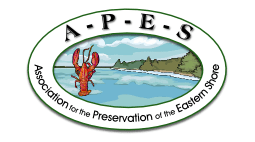You are here
Apes Press Release

Provincial Department of Fisheries and Aquaculture fails to enforce its own regulations again
Feb 18 2013 A recently released report by Inka Milewki, Science Advisor for the Conservation Council of New Brunswick, shows that, in Nova Scotia, there has been a significant increase in the number of finfish monitoring stations exceeding the provincial guidelines for pollution set out in the Nova Scotia Department of Fisheries and Aquaculture (NSDFA) Environmental Monitoring Program (EMP). The report was prepared for the Atlantic Coalition for Aquaculture Reform.
According to Milewski, during and shortly after the fish harvest period, a large number of these farms are in the grossly polluted stage. At this stage, dead zones on the sea floor occur under and near these sites.
According to the Association for the Preservation of the Eastern Shore (APES), this report confirms what residents of Nova Scotia’s coastal communities have been saying about why they do not want open pen feedlots on their shores. Residents’ pleas to both federal and provincial governments to enforce their own pollution monitoring standards seem to have fallen on deaf ears.
Vice-President of APES, Bill Williams, recently released the findings of some investigative work done on the monitoring of an open pen salmon farm at Owl’s Head on Nova Scotia’s Eastern Shore.
According to the province’s own documents, a majority of the test sites on this farm showed extremely high sulphide readings in 2009. The site was retested in 2010 and 2011, prior to being restocked with fish in 2012. The test sites with the highest sulphide level in 2009 were not, however, re-tested. In some cases, testing was done up to 150m away from original 2009 sites. This is in contravention of the NSDFA’s own regulations.
According to Williams, “Monitoring regulations state that a longitudinal line is drawn down the centre of the site, and test stations should be placed on either side of this line. This procedure was not followed at Owl’s Head. Test sites are all given a position determined by global positioning system co-ordinates, so it is easy to measure precisely.”
The finding that, according to the province’s own records, the Department of Fisheries and Aquaculture had failed to enforce its own rules regarding fish feedlot pollution was conveyed by APES to Fisheries Minister Belliveau and Premier Dexter.
It took the Fisheries Minister a month and a half to respond, which he did on behalf of the Premier, and only after APES released their findings about the failure to monitor pollution levels adequately to the press.
Minister Belliveau assured APES that what they were reporting “could not have happened.” He said, “the data would have been checked and rechecked before it was put into their records.” APES members, however, claim they used information received from his own department to produce their findings.
According to Bill Williams, “Monitoring of sulfide levels at Owl’s Head from 2009 until 2011 were carried out by the NSDFA and Sweeney International, an aquaculture services company. It is very unlikely that these test personnel did not know the tests were not being done in the proper place.
“This type of monitoring is nothing less than the fudging the numbers. This process can make a very poor quality site look like a great site. If we (APES) were doing this we would no doubt face charges under a number of acts and possibly under the Criminal Code. Open pen salmon farmers in the province appear to be immune to following the very lax rules which govern them. We add another item to the list of things in the open pen aquaculture file mishandled by the provincial NDP.”
Williams continued: “There is an economic principle called the ‘tragedy of the commons,’ which suggests that people who make their livings by exploiting a common resource do not have an incentive to take care of it. In our case, the resource is our pristine coastline and the health of our existing wild catch fisheries. The open pen salmon farmers have no plans to take the inititiative to protect our common resource.”
For further information go to http://nsapes.ca/
Press Contact:
Bill Williams
Vice President
APES
885-2786
Claire.Williams@ns.sympatico.ca
Copyright APES 2012 Website by Ionsign Online

